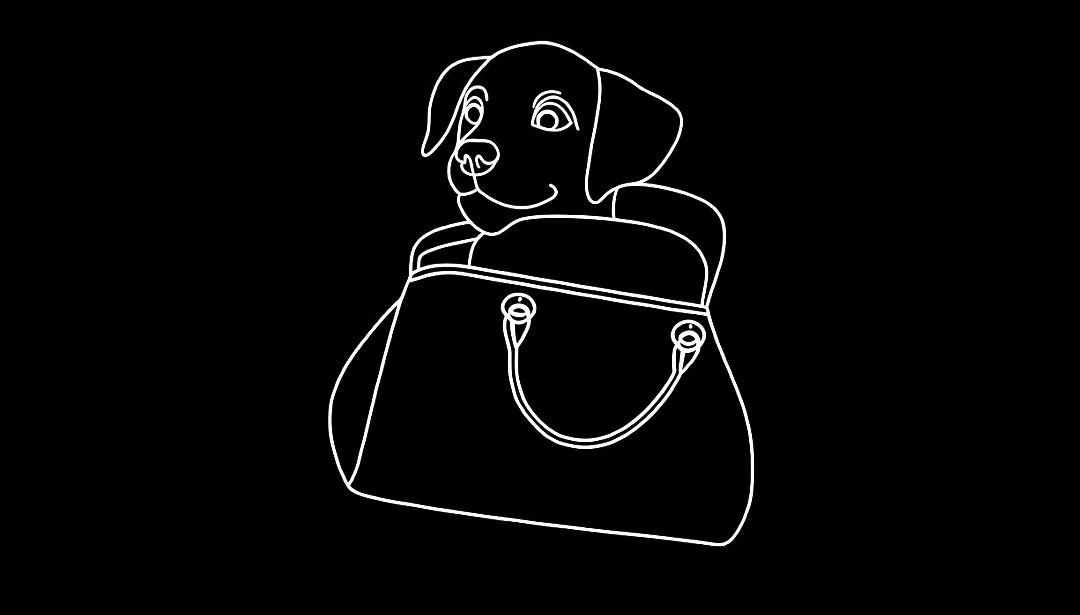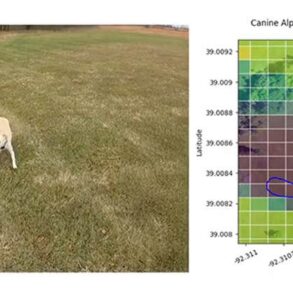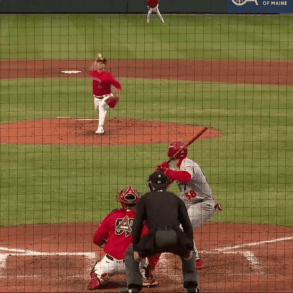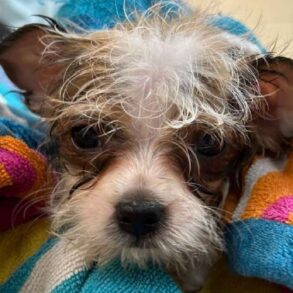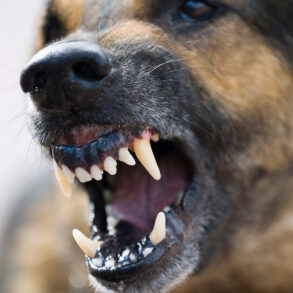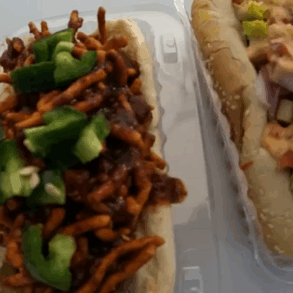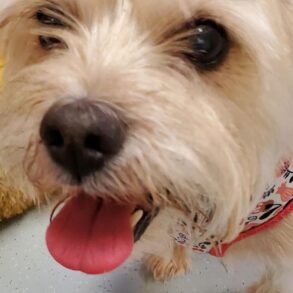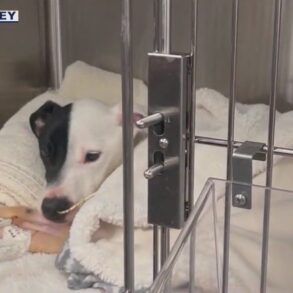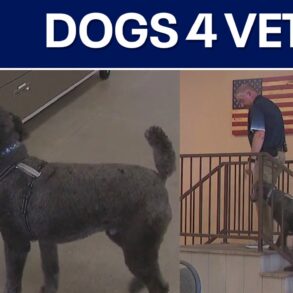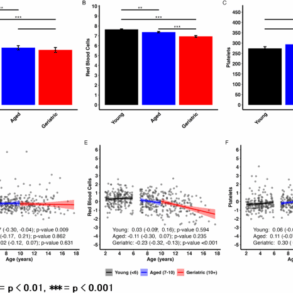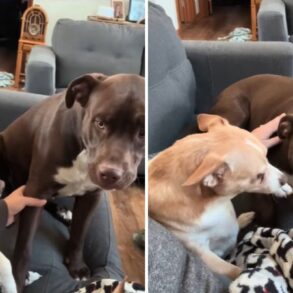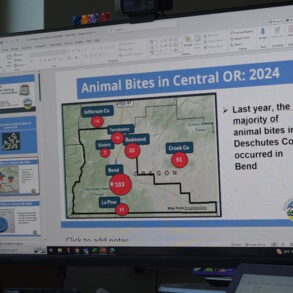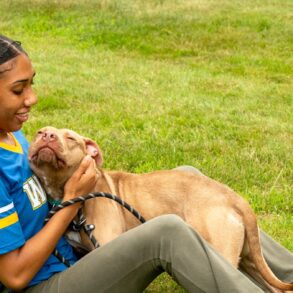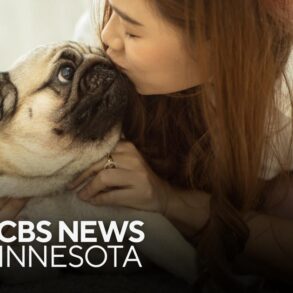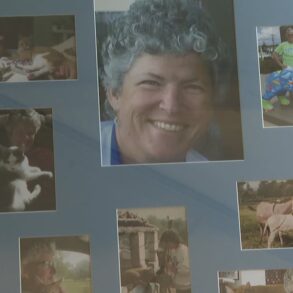Stephen Colbert asked Dr. Jane Goodall a big question. “What’s your favorite animal?” he wondered when the world’s most famous primatologist was a guest on a Late Night episode last September. Given Goodall’s groundbreaking research and conservation advocacy in Africa, he assumed her answer would be the chimps she’s worked with throughout her seven-decade career.
“Dogs,” she bluntly answered. “You can’t have any more unconditional love than a dog.”
This devotion shows in countless tales. There’s Hachiko, who waited at a Tokyo train station for a decade after his owner’s death. Bobbie the collie trekked over 2,500 miles across the country to reunite with his family. And Sergeant Stubby, who served in 17 World War I battles, learned to detect mustard gas and scout for wounded soldiers.
But it’s not just these legendary stories that matter. It’s the everyday moments: the morning greetings, the comfort during tough times, the shared joy during celebrations. Dogs offer something increasingly rare in our world: judgment-free companionship.
Enriching Lives
Science backs up what dog lovers have long known. Dr. Nancy Gee, professor of psychiatry at VCU Health and director of the Center for Human-Animal Interaction, explains that interactions with pets can lower stress, ease anxiety, and even decrease blood pressure. “Depression, agitation, and loneliness have been reduced,” she notes, “while mood, empathy, and social interactions improve.” Remarkably, these benefits can extend to people simply watching others interact with animals.
Dr. Gee’s journey into this field began as a hobby with dog sports and therapy work. Her scientific curiosity kicked in when she witnessed the profound impact her therapy dogs had in nursing homes and schools. One breakthrough moment stands out: a nonverbal, fearful boy in a preschool classroom who initially kept his distance. Over time, he not only approached the dog but began attempting speech and engaging in physical therapy, all motivated by his new furry friend.
Since the pandemic, our bonds with pets have deepened further. Just look at the “Frenchie on Board” car stickers rivaling “Baby on Board” in popularity. Pets have become full-fledged family members, and the benefits flow both ways. While humans gain companionship and emotional support, animals receive love, security, and a sense of belonging.
For adults and kids alike, these relationships reinforce and teach invaluable lessons about empathy, responsibility, and unconditional love. In therapeutic settings, animals help individuals cope with mental health challenges and physical disabilities, creating bridges where traditional approaches might fail.
This unique cross-species bond reminds us of a simple truth: Love knows no boundaries. Whether it’s a service dog guiding their human through daily challenges or a family pet offering silent support during tough times, these relationships enrich both human and animal lives in profound ways.

Ceiling and Visibility Unlimited
Military life demands stoicism, but even the toughest need support. That’s where CAVU comes in—a golden-furred chaplain’s assistant with four legs and an uncanny ability to sense distress.
Named after a pilot’s term for perfect flying conditions—“ceiling and visibility unlimited”—an acronym President George H.W. Bush, a decorated Navy pilot, used often and felt represented his life. Canine CAVU works alongside Chaplain John Casper at Virginia Military Institute in Lexington, interacting with cadets and providing support. “Nobody comes to see the chaplain when everything’s great,” says Casper, a ’04 VMI grad himself. “They come when they’ve exhausted all options.”
Inspired by success stories from the USS Ford in the Red Sea, where expeditionary facility dogs proved to be “game changers” for morale, Casper partnered with Mutts with a Mission to bring CAVU to VMI’s 1,600 cadets.
On duty, CAVU wears his vest with military precision around VMI’s campus. He sits with grieving cadets who’ve lost family members, gently nudging those who show signs of sadness or stress. “It’s remarkable how quickly he can calm someone whose emotions are in overdrive,” Casper notes. “It might be a simple tap with his nose, like, ‘Hey, you OK?’”
But off campus, CAVU transforms into a playful family dog, chasing toys with Casper’s kids. Come morning, he’s back on mission, ready to support the next cadet who needs a furry confidant.
Ahoy Matey!
Among the 2,500 sailors and marines aboard the USS Wasp, a multipurpose amphibious assault ship whose homeport is Norfolk, one crew member stands out: Ike, a yellow lab with a lieutenant commander’s rank and a vital mission—keeping spirits high at sea.
As an expeditionary facility dog (EFD), Ike works alongside Melanie Hennis, the ship’s resiliency counselor. His day starts on the flight deck, playing catch with the crew during their morning workouts. Between counseling sessions and mental health support, he makes his rounds throughout the ship, bringing tail-wagging comfort to those far from home.
“Ike’s service has been nothing short of exceptional,” says Commanding Officer Capt. Chris “Chewie” Purcell. “He reduces stress and anxiety, provides companionship, and offers a calming presence.” Sometimes Ike even helicopters to other ships, spreading his unique brand of morale boost across the fleet.
This innovative program, launched by Mutts with a Mission, is transforming naval mental health. “These dogs support sailor mental health, reduce destructive behaviors, and improve unit cohesion, including suicidal ideation, loneliness, and improving organizational identity and unit cohesion,” explains Terri Farricker, force improvement officer, Commander, Naval Air Forces Atlantic.
The program’s pioneer was Capt. Sage, also a yellow lab and the first EFD stationed on a naval vessel. During the USS Gerald R. Ford’s maiden eight-month voyage, Sage served alongside 5,000 crew members, proving dogs could play a crucial role in maintaining well-being during demanding missions.
“Military service is incredibly stressful,” Capt. Purcell notes. “Living in tight quarters, working long hours, performing dangerous tasks—all while separated from loved ones for months—can wear down even the strongest. That’s where Ike steps in, keeping our sailors and marines ready to defend our nation.”
Though Ike takes his duties seriously, he’s not above accepting treats from the captain. “I’d like to say he’s bonded with me,” Purcell laughs, “but he might just be using me for the treats!”
“Rarely does a day go by where a sailor or marine doesn’t tell me how much less stressed they felt after spending just a short time with Ike,” says Capt. Purcell. “They spend a few minutes with him and are ready to get back to work. They tell me, ‘That’s just what I needed today.’”
From the halls of VMI to aircraft carriers at sea, from hospital rooms to therapy sessions, these four-legged healers are revolutionizing how we think about mental health and emotional support. They remind us that sometimes the most powerful medicine comes with a wagging tail and an unconditional heart—no prescription needed.








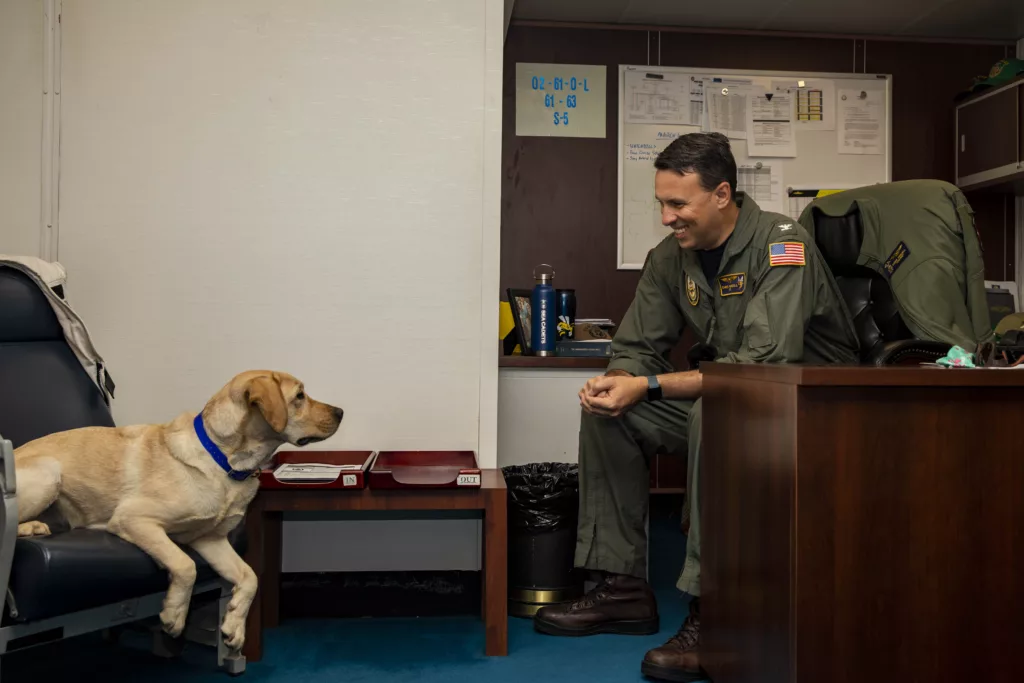



Mutts With a Mission
These dogs are making a difference.
Brooke Corson was inspired by watching her dog Angus interact with soldiers during her mobilization at Fort Benning, Georgia, in the early 2000s. She noted the difference he made in their day-to-day lives—the soldiers were happier, more adjusted, and more relaxed. Together with her husband and brother, she founded Mutts with a Mission in 2008 in Virginia Beach, an organization that not only trains expeditionary facility dogs deployed aboard ships, but also world-class service dogs to assist disabled veterans, first responders, and law enforcement personnel, who often struggle with the psychological and physical repercussions of their jobs. The dogs are provided at no cost to the recipient.
Recon has been Bobby Klepper’s service dog since 2021. The 6-year-old English yellow lab has been a “life saver,” says Klepper, who lives in Suffolk and worked for more than three decades as a search and recovery diver and bomb squad technician for the Virginia State Police and at the federal level. After multiple TBIs, caused by years of repeated concussions from bomb blast waves, he says life as he knew it had unraveled. But once Recon arrived, things immediately turned around. “Not only has Recon improved my mobility and stability,” Klepper says, “but he has also helped me regain my sense of purpose—and he’s an incredible companion.” MuttsWithAMission.org
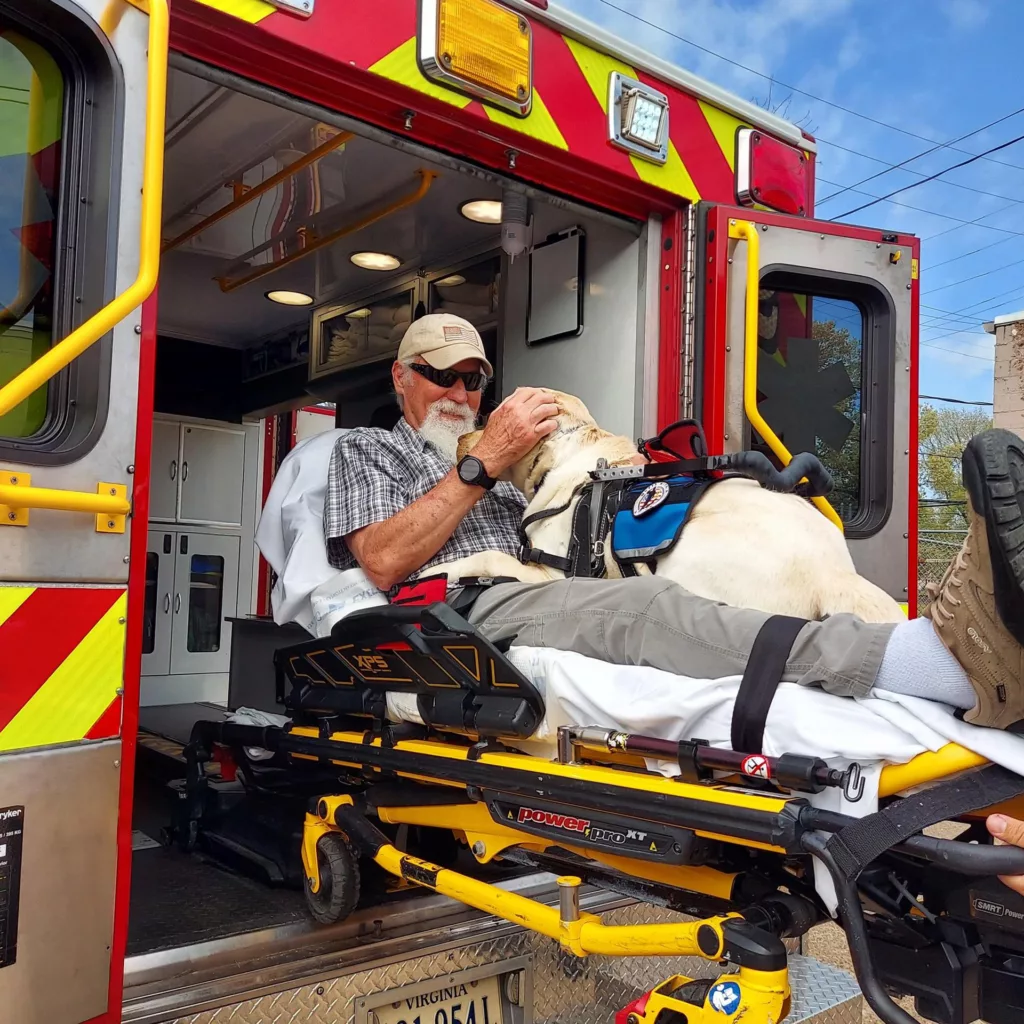



Dogs on Call
Meet VCU’s 4-legged therapy team.
Look for the “Dogs On Call” stickers at VCU Health and you just may discover tail-wagging therapists at work. These four-legged healers roam hospital halls and campus grounds, lifting the spirits of patients and calming stressed students during exams. It’s not just a pet program—it’s medicine with a furry touch. Administered by Dr. Nancy Gee and the Center for Human-Animal Interaction. 804-827-7297; CHAI.VCU.edu
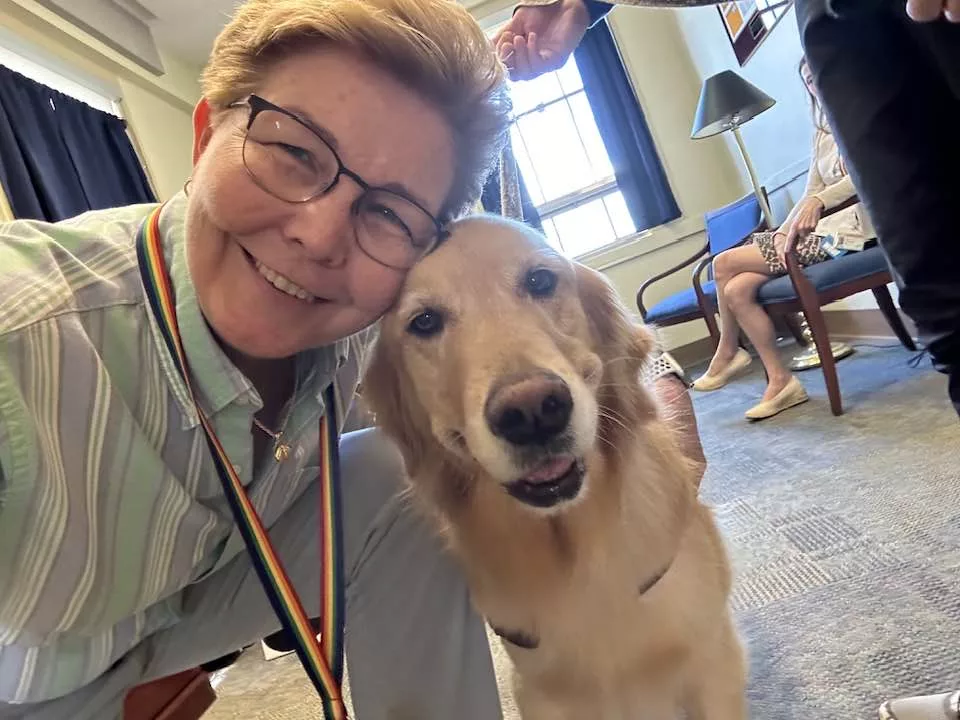



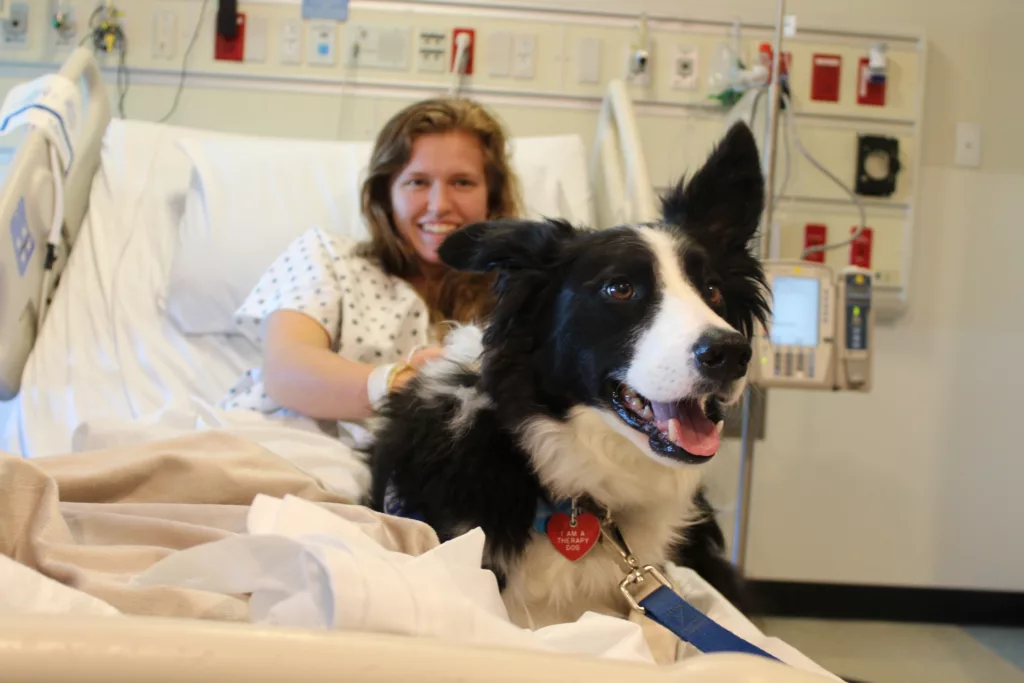







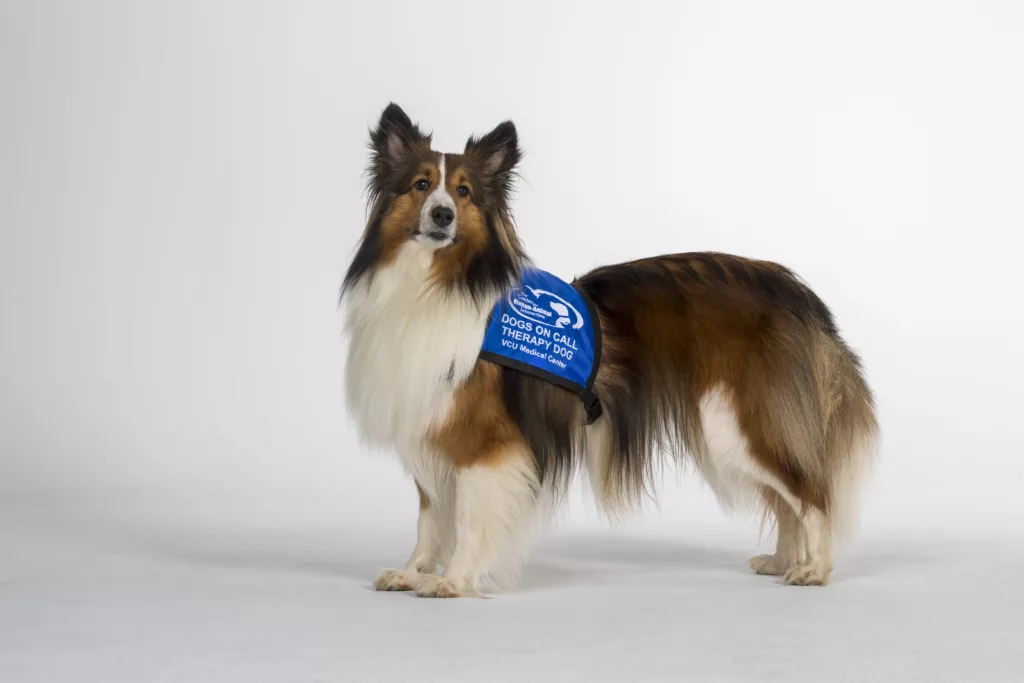



Featured photo collage by Sean McCabe. This article originally appeared in the April 2025 issue.
This post was originally published on this site be sure to check out more of their content.
